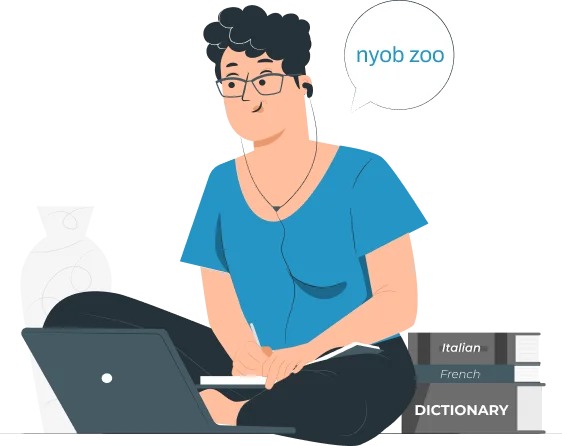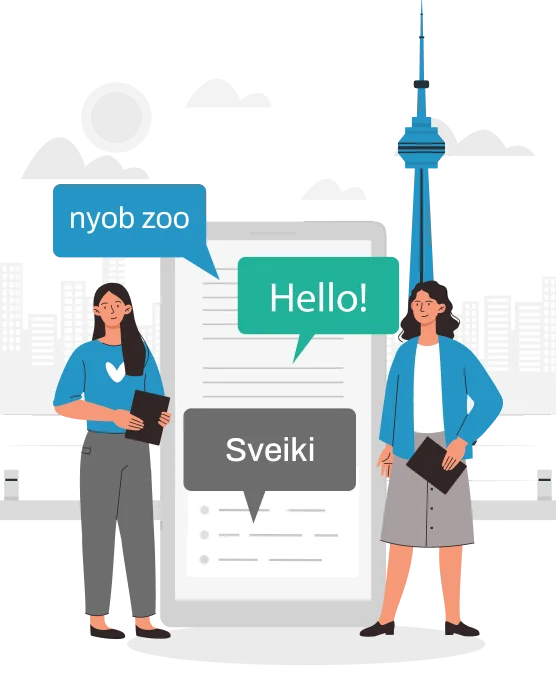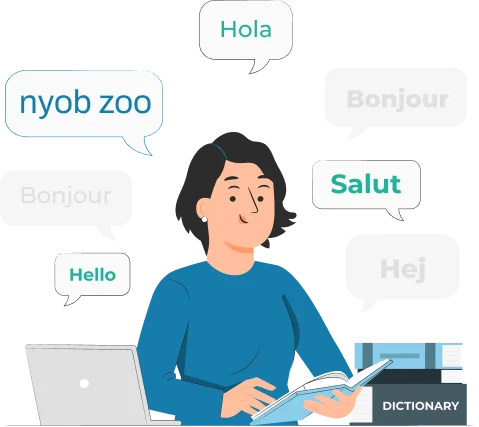
Ensure Quality and Accurate Hmong Translations
CCJK is the best Hmong translation services provider because of our massive network of 30,000+ translators and our strong vetting process. Moreover, CCJK ISO and ATA certifications further attest that delivering consistent quality ranks us as the top Hmong translation agency. We ensure a client-centric approach and assign you a dedicated project manager to ensure seamless communication. Whether your project is about Hmong to English translation services or vice versa we got you covered. Contact us today for a free quote!
Hmong Translation through Native Speakers
CCJK boosts 30,000+ translators among our ranks. Many of these are Hmong translators. Our strict vetting process ensures that your certified Hmong translator is also experienced in the industry you want to cater to. CCJK understands the cultural nuances that can occur when translating languages. This is exactly why CCJK ensures our Hmong translation services are done by the most relevant native speakers. Teams and project managers are hand-picked based on the type of Hmong translation services needed.

We translate all kinds of Hmong documents
As a leading translation service provider, CCJK understands the need for Hmong language translation services and helps you translate all kinds of documents.
Technical translations into Hmong
Hmong medical translation services
Website translation into Hmong
Hmong legal translations
Technical translations into Hmong
Hmong is a very complex language to translate, and doing it while maintaining tone, consistency, and the original intent is even more challenging. However, Hmong translation through CCJK is done through native speakers of the target language.
CCJK also employs the latest technologies and our machine translation software aids in the quick completion of your Hmong translation project. Ensure consistent quality for all technical Hmong translation services by availing of CCJK services.
Hmong medical translation services
Ensure accurate and consistent medical Hmong translation thanks to our agile translation process. Your native, certified Hmong translator team consists of individuals from different medical backgrounds.
This ensures that translations for pharmaceuticals, biotechnology, medical devices, IVD, CROs, IVR companies, or other healthcare areas can be done precisely. What matters to us is that you receive the most accurate English to Hmong and Hmong to English translation. CCJK translates over 230+ languages so talk to our representatives today for a free quote.
Website translation into Hmong
Website Hmong translation is not simple word-to-word translation. It entails complex curation of the UI/UX to suit the culture and changes in language lengths. Moreover, you can avail of multilingual website translations because CCJK translates 230+ languages.
Our unique vetting process ensures our ranking as the top Hmong translation company. Make sure you get quality website translations through CCJK’s professional Hmong translation services.
Hmong legal translations
Legal translation requires precise accuracy and the intent needs to be very consistent. This is why CCJK provides certified Hmong translators with relevant background experience in the legal industry.
Since law is a diverse field you can talk to our representative in detail to ensure the most relevant team members for your Hmong translations. Our ISO certification attests to our consistency in providing quality translations. CCJK has over two decades of translation experience under its belt. Leverage this experience for accurate and quick Hmong legal translations.
Start Your Hmong Translation Now.
Meet our native Hmong translators
In our network of 30,000+ language experts, we’ve many native-speaking Hmong translators who know the language inside out. They know how Hmong is used in different parts of the world and are fluent in all dialects. When you want to hire our Hmong translation services, we’ll connect you with professionals who translate your documents by focusing on a specific dialect according to your target market.
Language support
Hmong translation services in 230 languages
A top provider of Hmong translation services, CCJK allows you to choose between 230 language options to get your documents translated into Hmong or from Hmong to other languages.
